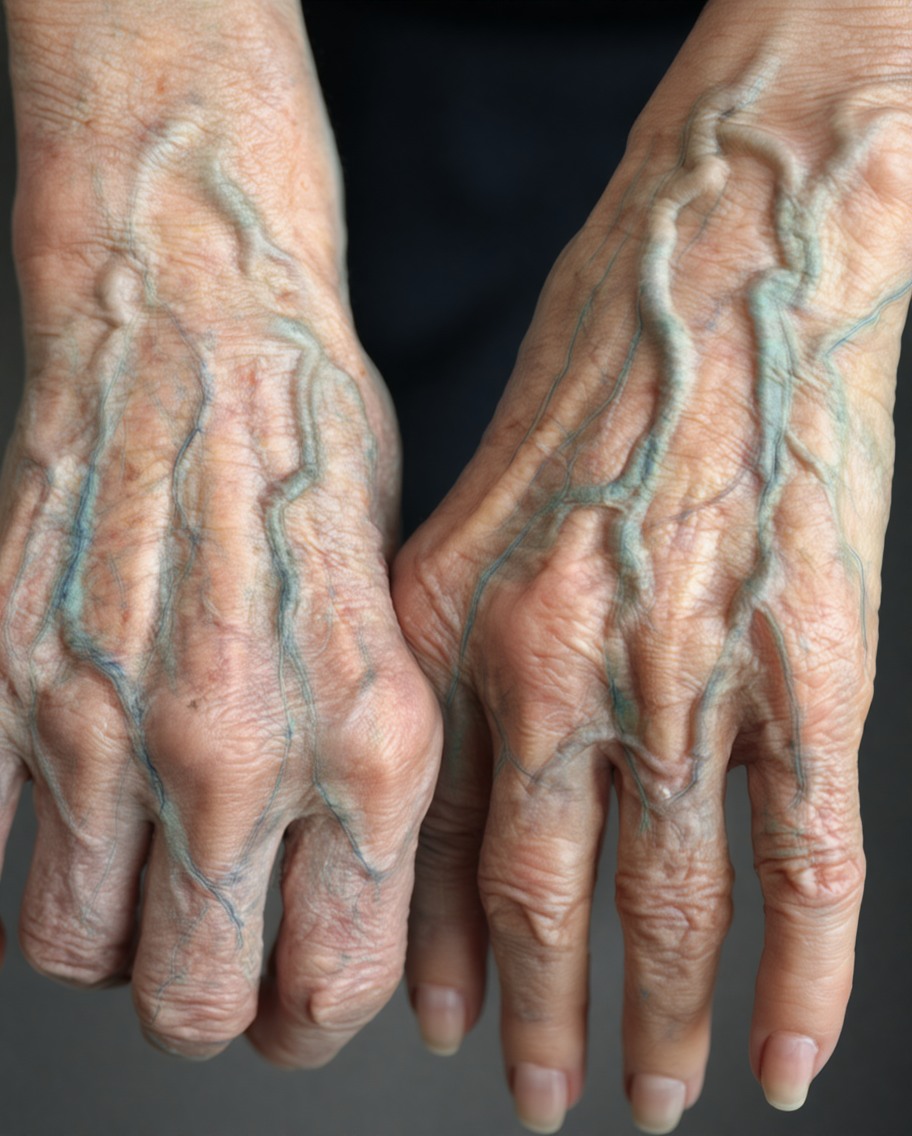Have you ever looked down at your hands or legs and noticed veins that seemed to pop up overnight—suddenly more defined, almost bulging beneath the skin? For some, this is a fleeting curiosity. For others, it raises concern: is it a harmless change, a sign of fitness, or a warning signal from your body? The reality can fall anywhere in between. Visible veins may be perfectly normal—or they could indicate issues with circulation. Understanding the difference is more important than many realize.
Veins are essential to your circulatory system, transporting oxygen-depleted blood back to the heart. Unlike arteries, which are thicker and lie deeper under the skin, veins are thinner, closer to the surface, and respond to changes in temperature, pressure, and overall health. Their visibility depends on a mix of factors—some harmless, some requiring attention. Recognizing which is which helps you make informed decisions rather than jumping to conclusions.
Common and Harmless Reasons for Prominent Veins
Low Body Fat
Less fat between skin and veins makes them naturally more noticeable. This explains why athletes, bodybuilders, or people who have lost weight often see veins standing out. It reflects low subcutaneous fat, not poor health.
Aging and Thinning Skin
As we age, skin loses elasticity and fat layers thin, making veins more visible. This is one of the most common cosmetic effects of aging and usually isn’t a medical concern.
Exercise and Fitness
Intense physical activity increases blood flow, expanding veins to meet oxygen demands. Post-workout vascularity is normal, especially in arms and legs, and can become consistent in people who train regularly.
Heat and Warm Weather
Temperature influences veins more than many realize. Hot weather causes veins to dilate to release heat, making them more visible, particularly on hands and legs.
Genetics
Some people naturally have prominent veins due to their DNA. If your parents or grandparents had them, there’s a strong chance you will too—regardless of health or fitness.
These causes are generally normal and rarely need medical attention. However, sudden, tender, or symptomatic veins could indicate something more serious.
When Veins Could Signal a Health Issue
Sudden or painful vein changes may point to circulation or valve problems. Key conditions include:
Chronic Venous Insufficiency (CVI): When vein valves weaken, blood pools in the legs, causing swelling, heaviness, and bulging veins. If untreated, it can lead to skin changes and ulcers.
Varicose Veins: Enlarged, twisted veins, usually in legs, causing aching, itching, or burning. They reflect inefficient blood flow and can worsen without care.
Superficial Thrombophlebitis: A clot near the skin’s surface, causing hardness, redness, and pain. Not as dangerous as deep clots but requires evaluation.
Deep Vein Thrombosis (DVT): A clot deep in a vein, often in the leg, can travel to the lungs, causing a potentially fatal pulmonary embolism. Symptoms include swelling, warmth, redness, and sudden pain—seek emergency care immediately.
Other Temporary Triggers
Veins may appear more visible due to temporary factors like dehydration, hormonal changes (menstruation, pregnancy, menopause), intense exertion, or rapid weight loss. In most cases, visibility normalizes once the trigger resolves.
When to Seek Medical Help
Consult a doctor if veins:
Appear suddenly or grow rapidly
Cause pain, swelling, or warmth
Are accompanied by skin changes or ulcers
Feel firm, tender, or cord-like
These signs may indicate circulatory issues that require evaluation and possibly urgent care.
Treatment and Management Options
If veins are bothersome or painful, options include:
Lifestyle Adjustments: Regular exercise, maintaining a healthy weight, elevating legs, and avoiding prolonged sitting or standing.
Compression Stockings: Apply gentle pressure to improve blood flow and reduce swelling, particularly for those who stand or sit long hours.
Medical Procedures: Sclerotherapy, laser therapy, or vein ablation can treat persistent veins, restore circulation, and improve appearance.
Preventing Vein Problems
Prevention focuses on lifestyle: stay hydrated to maintain blood viscosity, move regularly during long flights or desk jobs, avoid smoking, and eat a balanced diet rich in vitamins C and E to support vessel strength and elasticity. Small daily habits have long-term benefits.
The Emotional Side of Visible Veins
Visible veins can be a source of pride—signaling fitness—or a reminder of aging. Both are valid perspectives. Body perception affects confidence and mental well-being. If veins cause distress, discuss safe cosmetic options with a healthcare provider.
Listen to Your Veins
Veins aren’t just visible lines—they reflect your body’s health. They can indicate hydration, fitness, stress, or disease. Paying attention isn’t vanity; it’s awareness. While prominent veins are often harmless, those accompanied by pain or swelling should not be ignored.
Your veins tell a story about your body’s function and well-being. Most changes are minor, but awareness ensures serious conditions are addressed promptly. Observing, understanding, and responding to your body’s signals helps maintain health, comfort, and confidence.
